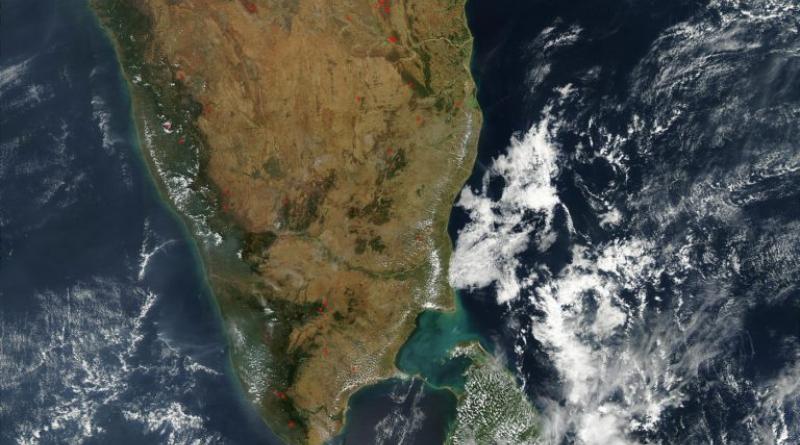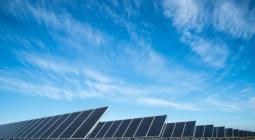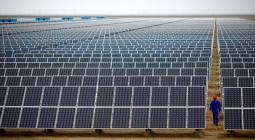Η υπόσχεση ενός κόσμου με 100% καθαρές ανανεώσιμες πηγές ενέργειας.

The oldest solar organization in the world, the International Solar Energy Society, dates back to 1954. President David Renné tells pv magazine about India’s solar dreams, the next best thing in solar technology and what renewables hold for the world’s future.
For decades, the International Solar Energy Society (ISES) has been promoting the development and application of solar energy technologies worldwide, and it is promising to lead the energy transformation to a 100% renewable energy world this century.
In 1963, ISES was accredited by the United Nations and has been working with UN entities and programs ever since, taking part in important events including the UN Framework Convention on Climate Change COP conferences and the UN Commission on Sustainable Development meetings.
India is home to one of the largest national sections of ISES – the Solar Energy Society of India – and the global body is establishing a formal partnership with India’s International Solar Alliance.
With an atmospheric and environmental sciences background, ISES president David Renné has extensive international renewable energy experience, particularly in Asia and South Asia, the Middle East, Europeand Latin America.
While working at the U.S.-based National Renewable Energy Laboratory, he worked on projects for international organizations including the UN’s environment and development programs and its Department of Economic and Social Affairs as well as the World Bank, the World Meteorological Organization and the International Energy Agency.
He told pv magazine what he thinks about India’s ambitious solar energy goals and what needs to be done on the global stage to better promote solar power.
PVL: India has the world’s most ambitious renewable energy target: 175 GW by 2022, of which 100 GW would be solar. Do you think this is achievable?
DR: National solar targets are among the best policy mechanisms to scale up solar energy use, and there is little doubt that India does have the wherewithal to achieve its ambitious solar targets. Even though current installed capacity is way off this target, the country is taking important steps within the national and state governments, utilities, and the private sector, as well as building capacity through educational programs in all aspects of solar energy development – including financing, policy development, manufacturing and project development – to meet this target. It is also taking a very important step by encouraging the build-up of high-quality, in-country module manufacturing capacity.
A lack of cheap financing and land are key problems for the Indian solar industry. How can they be resolved?
At Re-Invest, I learnt that there may actually be a large amount of unused land that could be converted to solar farms, although I do not have specific numbers at hand. Furthermore, India can more aggressively pursue a rooftop solar program which makes use of existing rooftop space for large-scale solar development.
Domestic manufacturing is India’s achilles heel. What needs to be done about it?
The government – at national as well as state levels – must be more proactive in creating an enabling environment for manufacturing, including favorable policies like tax credits and incentives, workforce training, proper trade mechanisms and access to low-cost capital financing. In order to increase the financial viability of these systems, as well as their installation, the country must also undertake a rigorous quality control process to ensure that the panels are manufactured at the highest international standards, and that their installations are done using global best practices.
If you were to set India’s solar agenda, what would be on your top 10 list of priorities?
My top priority would be to develop favorable policies at national and state levels to create an enabling environment for pursuing rooftop and grid-scale solar development, and to ensure these policies are stable so that the risks to investors are not hampered by policies that might change from year to year. This priority includes policies for reaching out to and engaging foreign countries to enable best practices and capacity building within India.
Worldwide, the solar sector needs better power storage, grid infrastructure and government support to meet growth predictions. What kind of policy push is required?
One of the key policy mechanisms that is encouraging the growth of renewables in general, and solar in particular, is to establish aggressive national targets. Other policies to level the playing field for solar energy and regulations that make the utility system more flexible are also key to achieving these targets.
Public awareness and acceptance, workforce development programs and state and local initiatives are all additional key pushes that are necessary.
What is the next best thing in solar technology?
There are many promising technologies that will help increase PV conversion efficiency, add years to their performance and make the technologies more reliable. These technologies can be the use of perovskites, nanotechnologies and organic solar technologies. Furthermore, as the cost of storage continues to drop, the availability of affordable storage will greatly add to the market potential for PV.
How is ISES facilitating this?
ISES is facilitating these discoveries through publications in its Solar Energy Journal, and through reporting key results through its webinars, conference presentations and newsletter articles. These outreach activities are designed to facilitate communication between researchers and project designers and manufacturers.
What is the role of Young ISES in India?
Young ISES is a social and professional network for young members of the International Solar Energy Society that focuses on connecting and reaching out to students and PhD students to build a strong network of young solar energy professionals. Many of the Young ISES members are from India, bringing their enthusiasm for India’s current solar development into our network, and strongly contributing to the growing solar voice on a global level.
22 February 2019
pv magazine




